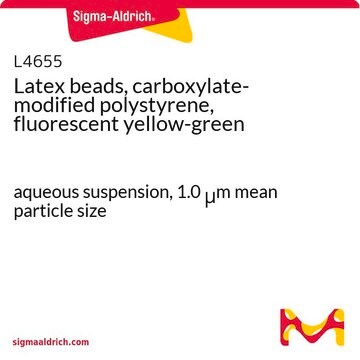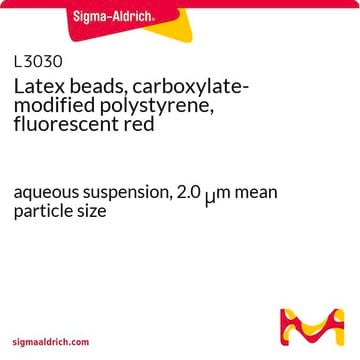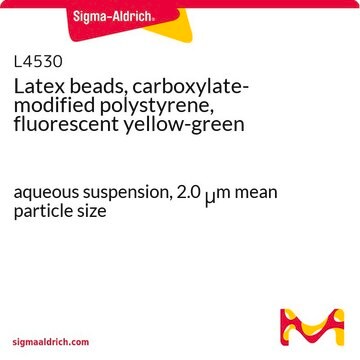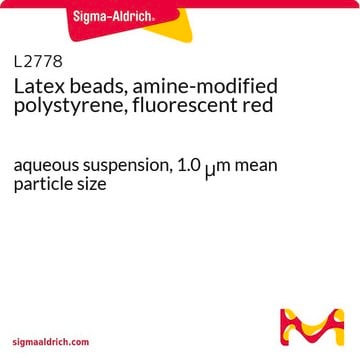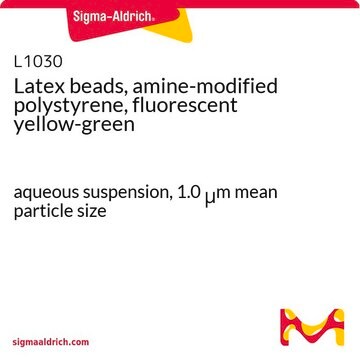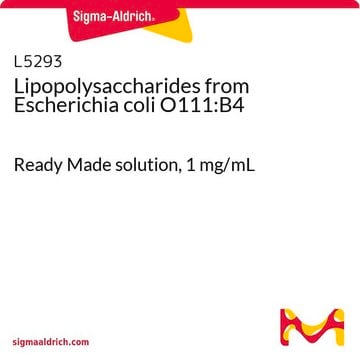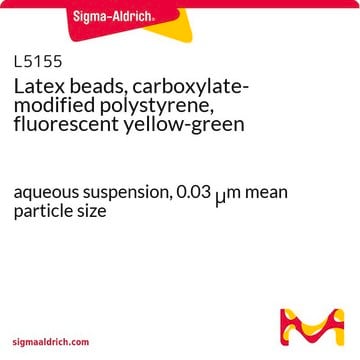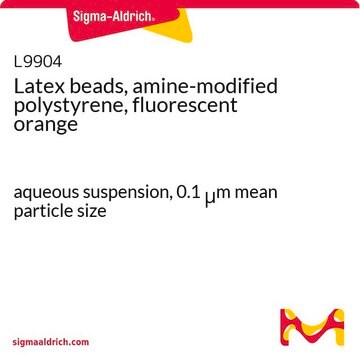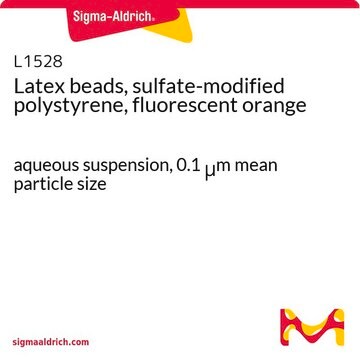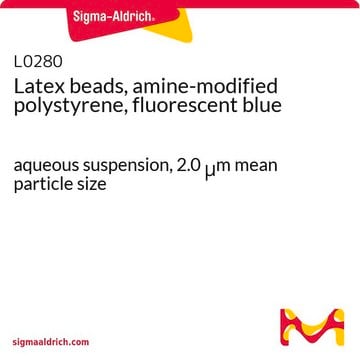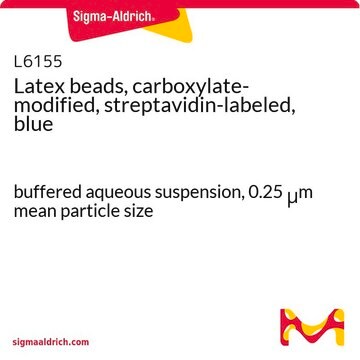Unfortunately, the bead count for this product has not been determined. The particle size is approximately 0.5 um and the solid content is approximately 2.5%. Please see the link below to review the full product specifications:
https://www.sigmaaldrich.com/specification-sheets/357/795/L3280-BULK________SIGMA____.pdf
L3280
Latex beads, carboxylate-modified polystyrene, fluorescent red
aqueous suspension, 0.5 μm mean particle size
Synonym(s):
Carboxylate Polystyrene Beads, Fluorescent Latex Beads
Select a Size
€104.00
Select a Size
About This Item
€104.00
Recommended Products
form
aqueous suspension
composition
Solids, 2.5%
technique(s)
cell based assay: suitable
mean particle size
0.5 μm
fluorescence
λex ~575 nm; λem ~610 nm
application(s)
cell analysis
Looking for similar products? Visit Product Comparison Guide
Application
Storage Class Code
10 - Combustible liquids
WGK
WGK 3
Flash Point(F)
Not applicable
Flash Point(C)
Not applicable
Personal Protective Equipment
Choose from one of the most recent versions:
Already Own This Product?
Find documentation for the products that you have recently purchased in the Document Library.
Customers Also Viewed
-
How many latex beads (500 nm) are present in 1 mL solution?
1 answer-
Helpful?
-
-
How many fluorescent beads (L3280) are in the 1 ml of the product?
1 answer-
The bead count for this product is not a tested specification. As listed in the "Properties" section of the product detail page, the solids constitute 2.5% of the aqueous solution. This specification can also be viewed on the sample Certificate of Analysis: https://www.sigmaaldrich.com/certificates/sapfs/PROD/sap/certificate_pdfs/COFA/Q14/L3280-BULKMKCS6365.pdf.
Helpful?
-
Active Filters
Our team of scientists has experience in all areas of research including Life Science, Material Science, Chemical Synthesis, Chromatography, Analytical and many others.
Contact Technical Service